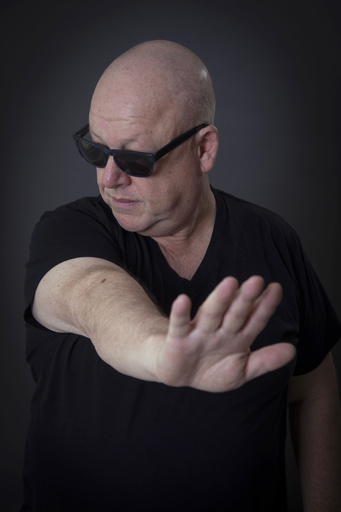
NEW YORK — The Pixies’ latest album, “The Night the Zombies Came,” is a diverse exploration that touches on various themes ranging from the undead to Medieval dining experiences and even elements of science fiction. This collection includes 13 tracks and marks the debut collaboration of the group with bassist Emma Richardson. The album seamlessly flows through different musical styles including folk, punk, and psychedelia, all the while evading a strict formula.
Rather than following a traditional album structure, “The Night the Zombies Came” presents itself as a cinematic experience, with each song acting as a brief narrative. Black Francis, the band’s frontman and visual artist, highlights that this is especially apparent in the album’s slower or midtempo pieces, where they emphasize a sense of space and reverb. He elaborates on the creative aesthetic, comparing their surf music stylistically to the sophistication of a tuxedo, leading to a sound that recalls elements of a spaghetti Western or the compositions of Ennio Morricone. “We don’t excel in any specific genre but enjoy a variety of popular music,” he says.
The eclecticism is evident throughout the album. The folk-influenced tracks draw inspiration from artists like Shirley Collins, while the track “Jane (The Night the Zombies Came)” blends Black’s chant-like vocals with a mix of Lou Reed’s style and sacred music influences. The playful guitar work on “Hypnotized” is structured loosely like a sestina, showcasing a unique lyrical approach. The closing piece, “The Vegas Suite,” is a reinterpretation of the 1950s classic “Que Sera, Sera.”
Francis notes that the album lacks a unified theme, a consistency that can be found throughout the Pixies’ discography. However, listeners may still discover connections, like those present between “Ernest Evans,” a lively homage to singer Chubby Checker, and “Kings of the Prairie,” which pays tribute to Mexican musicians. Both songs create a narrative of relentless touring, evoking images of lengthy performance schedules, the expansive roads, and the monotony of hotel rooms — all set against the backdrop of an unpredictable soundscape.
This approach resonates with fans, underscoring the Pixies’ identity as outsiders and the authentic connection they share with their audience. Earlier this year, the band celebrated the 35th anniversary of their iconic album “Doolittle,” a cornerstone of alternative rock that solidified their status as a groundbreaking force in guitar music. Francis reflects on the occasion, emphasizing that their focus during the album’s creation was on the quality of their work rather than the accolades. “We were appreciative that people liked it,” he states.
When addressing the significance of their music in the broader context, Francis remains humble, avoiding claims of influence or importance. “It’s difficult to assess your own records in such a grand manner since it can come off as a bit presumptuous,” he admits.
“Doolittle,” which follows the revered “Surfer Rosa,” released in 1988, has recently seen a resurgence in interest, particularly after the passing of its influential producer, Steve Albini, due to a heart attack at the age of 61. Francis fondly recalls his time working with Albini, appreciating his laid-back attitude. “He didn’t take everything too seriously, which added a valuable perspective to our creative process. It’s useful to adopt a mindset where you’re not overly attached to your work, allowing for the possibility of starting over if needed,” he concludes, emphasizing the importance of creative freedom.
